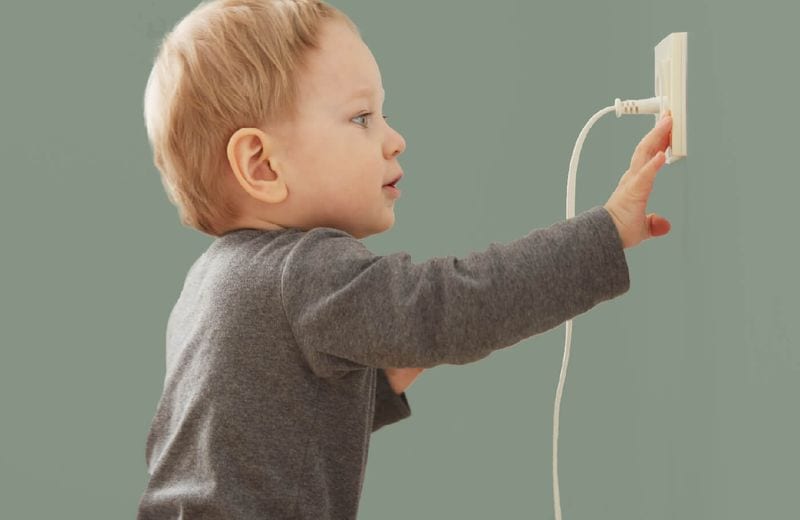Understanding the behavior of children can be a perplexing yet rewarding journey for parents and caregivers. Children, with their boundless energy and vivid imaginations, often exhibit behaviors that can be puzzling to adults. Distinguishing between behaviors that are typical and those that may indicate underlying issues is essential for ensuring a child’s healthy development.
This blog post aims to explore nine common behavioral issues observed in children, detailing what is considered typical and what might be cause for concern. Through this exploration, we hope to provide clarity, understanding, and practical advice to help navigate the complexities of child behavior.
1. Temper Tantrums

Temper tantrums are common during toddlerhood, often starting around age two. They are typical responses to frustration and are part of normal development. During a tantrum, a child may cry, yell, or kick. Parents might worry when tantrums become frequent or intense. If tantrums persist beyond age four, or are accompanied by aggressive behavior, consultation with a pediatrician may be necessary. In the meantime, remain calm during episodes and offer comfort once the child cools down. Understanding triggers and setting consistent boundaries can help manage tantrums effectively.
2. Defiance and Opposition

Defiance is typical in children aged two to six as they seek independence. This behavior is part of asserting their will and testing boundaries. Brief periods of opposition, like refusing to eat vegetables or wear a jacket, are normal. However, if defiance is constant and affects daily functioning, it may signal a behavioral disorder. Parents are advised to set clear expectations, be consistent, and acknowledge positive behavior. Offering choices can empower children and reduce power struggles, fostering cooperation and understanding.
3. Aggressive Behavior

Aggression, such as hitting or biting, can be typical in toddlers learning to express themselves. As children grow, they should develop better coping mechanisms. If aggression continues into school age, or is severe, it might indicate underlying issues like ADHD. Parents should avoid shouting and instead model calm behavior. Teaching children to express feelings with words and encouraging empathy are effective strategies. Consulting professionals for persistent aggression can provide additional support and guidance for parents.
4. Anxiety and Worry

Feeling anxious occasionally is normal for children, especially in new situations like starting school. Temporary worries about tests or making friends are typical. However, excessive anxiety that interferes with daily activities may require attention. Signs include trouble sleeping, avoidance behaviors, and physical symptoms like stomachaches. Parents can help by listening to their child’s concerns, offering reassurance, and promoting relaxation techniques such as deep breathing. For persistent anxiety, seeking professional help can provide beneficial strategies and support.
5. Attention-Seeking Behavior

Children naturally seek attention as a form of validation and connection. Occasional interruptions or showing off are typical. However, if a child constantly seeks attention in disruptive ways, it may indicate an underlying need. Parents should provide positive attention for appropriate behavior and set limits on disruptions. Engaging in regular one-on-one activities can meet the child’s need for attention constructively. Encouraging self-reliance and praising independent play are also beneficial in promoting balanced attention-seeking behavior.
6. Hyperactivity

High energy levels are common, especially in young children, who seem to have endless reserves of energy. While running, jumping, and climbing are typical, excessive hyperactivity that disrupts daily life might indicate ADHD. Parents should observe if the behavior is consistent across different settings. Encouraging physical play can help manage excess energy. Structured routines and clear expectations can provide stability. If hyperactivity is unmanageable, consulting a healthcare professional can offer guidance and assessment options.
7. Social Withdrawal

Some children are naturally introverted and enjoy solitary activities, which is perfectly normal. However, persistent social withdrawal can be concerning if it affects a child’s ability to engage with peers. Parents should observe if their child is avoiding social interactions due to fear or anxiety. Encouraging participation in group activities can help. Building social skills through role-play and supportive discussions can also foster confidence. If withdrawal continues, professional advice might be necessary to address potential underlying issues.
8. Sleep Issues

Sleep difficulties, like resisting bedtime or frequent awakenings, are common in young children. These issues often stem from inconsistent routines or anxiety. Establishing a calming bedtime routine can ease the transition to sleep. Parents should ensure the child’s sleep environment is comfortable and free from distractions. If sleep problems persist and impact daytime functioning, it might be indicative of a sleep disorder. Consulting a pediatrician can provide insights and potential interventions to improve sleep hygiene.
9. Impulsivity

Impulsivity is often observed in young children, driven by curiosity and a desire for instant gratification. This behavior is generally normal but can become problematic if it leads to unsafe situations or disrupts social settings. Teaching children to pause before acting and think through consequences is vital. Parents can model self-control and reinforce positive behavior. If impulsivity persists and hinders a child’s daily life, professional evaluation might be necessary to explore underlying causes.

Well, hello there!
My name is Jennifer. Besides being an orthodontist, I am a mother to 3 playful boys. In this motherhood journey, I can say I will never know everything. That’s why I always strive to read a lot, and that’s why I started writing about all the smithereens I came across so that you can have everything in one place! Enjoy and stay positive; you’ve got this!

